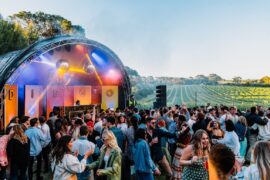Discover the Fascinating World of Goannas: A Parent’s Guide to This Unique Animal
Hey there, awesome parents and curious kiddos! Are you ready to dive into the captivating world of goannas? These majestic creatures, often spotted in the sun-baked lands of Australia, are not only a wonder to behold but also a fantastic gateway to learning more about nature’s diversity. In this guide, we’ll unearth all the incredible facets of goannas, ensuring you and your little explorers are well-equipped for your next outdoor adventure or animal trivia night!
What Exactly is a Goanna?
First things first, let’s get acquainted with what a goanna is. Goanna is a name given to various species of large monitor lizards that are found predominantly in Australia and Southeast Asia. These formidable reptiles are part of the Varanidae family, which means they’re cousins of the famous Komodo dragon! With over 25 species parading across different terrains, ranging from trees to rocky outcrops, goannas are versatile and fascinating to study.
A Stroll Through Goanna Habitat
Goannas aren’t picky about where they hang out. These lizards adapt to a wide range of habitats, so whether it’s a lush forest, arid desert, or somewhere in between, there’s likely a goanna species that calls it home. Encouraging your kids to understand that animals have preferred environments is vital to fostering respect for nature’s delicate balance.
Understanding Species and Sizes
Alright, let’s talk about variety! From the petite Short-tailed monitor, which is barely 20 cm long, to the impressive Perentie, which can grow up to 2.5 meters, goannas showcase a remarkable range in size. Just imagine the expression on your child’s face when learning about the giant lace monitor roaming the woodlands—it’s the stuff of awe-inspiring storytelling!
Goanna Behaviour 101
Now that we know what goannas are and where to find them, let’s peek into their daily lives. Studying goanna behaviour is like watching your very own nature documentary. They are exceptional climbers, displaying impressive agility as they go after birds’ eggs and other treats. On the ground, they’re no less impressive, with a taste for insects, smaller reptiles, and sometimes, carrion. Creating empathy with animals begins with appreciation for their survival skills, and goannas are survival artists!
Diet and Nutrition: What’s on the Goanna’s Menu?
When discussing the goanna’s diet, it’s like opening a window to an entirely different world. You’ll find that these reptiles are not fussy eaters. Goannas are carnivorous, with the larger species having the ability to take on prey as large as rodents and even small marsupials. Some goannas are opportunistic feeders and won’t turn down a free meal, scavenging meat where they can. This can be a superb talking point about food chains and animal behaviour with your kids!
Reproduction and Lifespan: The Circle of Life
Wondering about how little goannas come into the world? Goanna mating rituals and reproduction cycles offer insight into their lifespans and propagation of species. Most goannas lay eggs, and the maternal instinct in some species leading them to guard their eggs is truly remarkable. It’s a great way to introduce the concept of life cycles to children, highlighting the importance of protecting wildlife at every stage.
Our journey through the captivating world of goannas has just begun! But don’t worry, there’s so much more to learn about these enigmatic creatures. Continue reading to immerse yourself and your kids in the intriguing behaviors, conservation efforts, and fun facts about goannas. So, stay tuned, and let’s keep the spirit of discovery alive!
Gather around, friends, because next up, we’re going to discuss the ripple effect of human activity on goanna habitats and what we can do to ensure that our scaly buddies thrive for generations to come. Plus, we’ll cover some tips on goanna safety, because while they’re amazing to observe, it’s crucial to remember that they are wild animals. Keep reading to become a true goanna guardian!

Goanna Conservation and Safety: 5 Things Parents Should Know
Conservation and safety are key when introducing your family to the wonders of goannas. As stewards of our planet, it’s up to us to look after these incredible creatures and their habitat. Below are five crucial points to ensure a safe and educational experience with goannas:
1. Habitat Protection Is Everyone’s Responsibility
Goannas need space to roam and thrive. Teach your children that conserving the goanna’s natural habitat is essential. This includes avoiding littering, sticking to trails while hiking, and not disturbing natural flora. By protecting their ecosystem, we help maintain the biodiversity that goannas and other wildlife depend on.
2. Goannas Are Protected Species
In many regions, goannas enjoy protected status, meaning it’s illegal to harm or disturb them. This is an excellent opportunity to talk with your children about wildlife laws and the importance of regulations that help protect animal populations for the future.
3. Look But Don’t Touch
While it can be tempting to get close to a goanna in the wild, it’s best to observe from a distance. Remind your little adventurers that wild animals can be unpredictable and that respecting their space is part of being a good observer. Also, some goannas can carry bacteria like Salmonella, making it all the more important to avoid direct contact.
4. Teach Your Kids to Be Wildlife Detectives
Spending time outdoors looking for goannas can be turned into an interactive learning experience. Show your kids how to spot tracks, recognize burrows, or identify scratching on trees as signs of goanna activity. Not only is this fun, but it also teaches children about animal behaviors and tracking skills.
5. How to React if You Encounter a Goanna
If you’re lucky enough to spot a goanna, remind your children to stay calm and quiet to avoid startling the animal. Never attempt to feed a goanna as this can alter their natural behavior and diet. If a goanna approaches, it’s important to back away slowly while keeping an eye on the animal, as they can mistake humans for a threat or a source of food.
Understanding conservation and safety not only makes for responsible adventurers but also nurtures a generation that cares about preserving our planet’s wildlife. Goannas, with their prehistoric appearance and intriguing habits, offer the perfect opportunity for families to connect with nature and learn valuable lessons along the way.
The Importance of Goannas in the Ecosystem
Goannas play a critical role in the ecosystem. As top predators, they help control the populations of rodents, insects, and other small animals. This natural pest control is vital for the balance of the ecosystem. They’re also scavengers, cleaning up dead animals, which helps prevent the spread of disease. Teaching your kids about the goanna’s role in the ecosystem can increase their understanding and appreciation of nature’s interconnectedness.
Fun Goanna Activities for the Whole Family
Learning about goannas can be bundles of fun with these family-friendly activities:
- Create a goanna fact treasure hunt around your home or garden with clues leading to goanna facts.
- Draw or paint your favorite goanna species.
- Visit a local zoo or wildlife sanctuary that houses goannas to see them up close.
- Make goanna-themed crafts or bake cookies in the shape of goannas.
- Write a story or poem about the day in the life of a goanna.
By engaging in these activities, not only do you make learning about goannas an absolute delight, but you also create lasting memories with your children. Plus, you’re reinforcing their connection with the natural world and all its amazing inhabitants.
Now that you’re equipped with the knowledge and resources to understand and respect these incredible lizards, it’s time to step out and explore. Let the mysterious charm of the goanna inspire you and your family to discover more about the natural world and the wonders it holds. Happy exploring!
For more great fun click here. For more information see here
Disclaimer
The articles available via our website provide general information only and we strongly urge readers to exercise caution and conduct their own thorough research and fact-checking. The information presented should not be taken as absolute truth, and, to the maximum extent permitted by law, we will not be held liable for any inaccuracies or errors in the content. It is essential for individuals to independently verify and validate the information before making any decisions or taking any actions based on the articles.




